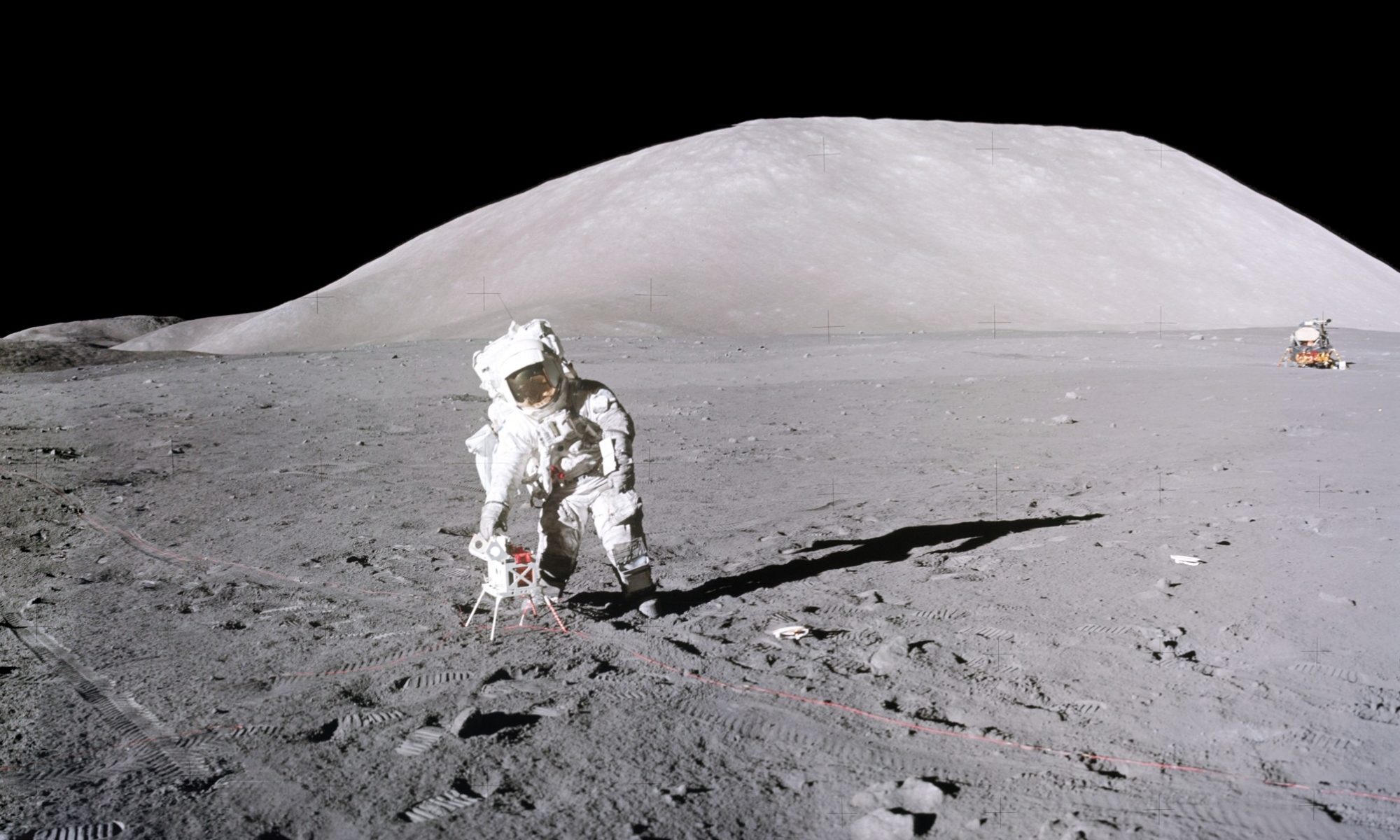 A mosaic of wide angle camera (WAC) images from the Lunar Reconnaissance Orbiter camera (LROC) taken in December 2010 (NASA/ASU/GSFC photo).
A mosaic of wide angle camera (WAC) images from the Lunar Reconnaissance Orbiter camera (LROC) taken in December 2010 (NASA/ASU/GSFC photo).
My first encounters with Paul Spudis occurred in the years after Apollo 17 when he was working with my good friend, Gordon Swann, at the Astrogeology Center in Flagstaff, Arizona. In those early interactions, Paul and I rapidly drifted into a friendship of frank debate about lunar science, space policy, and politics, agreeing most of the time but always finding something to question in the other’s arguments: Is the Procellarum Basin a giant impact structure? Is Serenitatis younger than Crisium? Is lunar helium-3 fusion power a viable energy option in the future? Should NASA be replaced by a new, deep space exploration agency? (Paul finally agreed with me on that one.) Whatever the outcome of these discussions, I came away having learned far more than he possibly could have.

Paul was forever willing to enter into vigorous debate, always commanding more facts than any opponent. The debates were never personal, as he also was willing to be a close friend with any opponent. If Paul thought a friend was getting a raw deal, there was no truer supporter, as I discovered on several occasions.

We always agreed that the Moon and cislunar space constitute one of the essential keys to the future of the United States, freedom and humankind (click here for recent discussions on The Spudis Lunar Resources Blog). In this belief, he and Anne joined our mutual friend, William Mellberg. Paul and Bill, I am sure, already have begun their strategy sessions. How I wish we could hear the results!
Like many of his colleagues, Paul was also an avid science fiction buff. One of his favorite movies was George Pal’s classic, Destination Moon, according to Ron Wells, another of our mutual friends. At the end of February this year, Ron sent Paul a 47 min copy of a behind-the-scenes documentary made at the time of its filming with cast, crew and stage sets. Apparently Paul had never seen this historic film and told Ron that he was thrilled by it.
It can be said of Paul: He never stopped working for science, the Moon, and, most importantly, the future of his family and his country.
 Paul in his LPI office in Houston. A lithograph of a Chesley Bonestell painting can be seen on the wall at right.
Paul in his LPI office in Houston. A lithograph of a Chesley Bonestell painting can be seen on the wall at right.
I last saw Paul in early December 2017 at his home away from home, The Lunar and Planetary Institute, and then at Space Center Houston for a joint public discussion about returning to the Moon, not knowing then about the new battle he was about wage. When we talked by phone a few months later, I learned of the challenge he faced, sharing his optimism about the outcome. God Speed, Paul.
Jack
Copyright © by Harrison H. Schmitt, 2018. All rights reserved.
